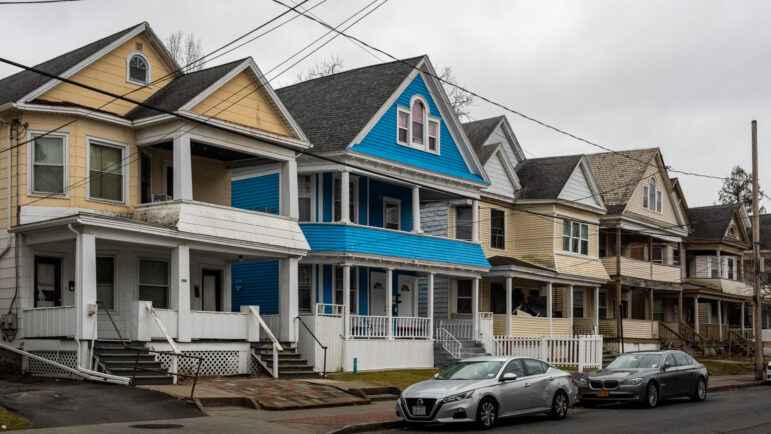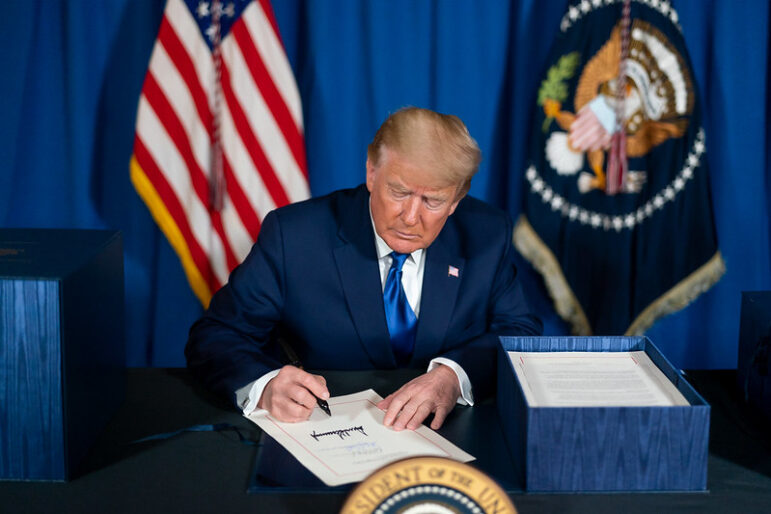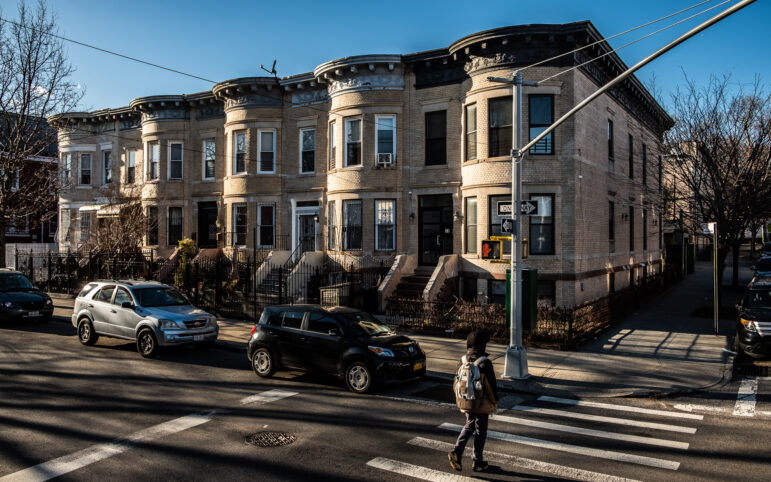The number of channels and rate of funding for New York City’s thriving public access TV scene could be made the same as that for the rest of the country if a massive telecommunications overhaul now making its way through the U.S. Senate becomes law.
The cause of high alarm among local television producers for more than a year now, the Communications, Opportunity, Promotion and Enhancement (COPE) Act would shape the future of television, telephones, and the Internet, and would curtail funding and channel space for Public, Educational and Governmental (PEG) TV.
The COPE Act, passed by the House in early June and by a Senate committee last week, has received the most attention for its impact on “net neutrality,” because the bill would allow different Internet service providers to either facilitate or block connections to different web sites. But this revision of the Telecommunications Act of 1996 also would nationalize the cable agreements governing public access television with a “one size fits all” approach, according to Rick Jungers, director of outreach and community media for Manhattan Neighborhood Network, which programs four channels in Manhattan.
“There’s no room for the local community to make a case for what their needs are,” Jungers said. The Act “is not going to allow [public access TV] to grow, and it will have a limiting effect rather than a positive supporting effect.”
As one of the largest public access operations in the country, with 48 paid staff members and 400 hours of homegrown programming per week (“it just comes in – people bring it in,” he says), MNN and its siblings in other boroughs now enjoy the ability to negotiate for themselves with the cable companies, with the city’s backing. MNN, for example, receives $5.50 per year for each of Time Warner’s approximately 500,000 subscribers in Manhattan. That $2.75 million constitutes nearly all of MNN’s funding. But under the COPE Act, every public access TV operation would receive a flat 1% of the cable operator’s gross revenues.
“If there was a 1% cap on PEG contributions, we believe we would be in worse condition financially,” Jungers said. Just as important, COPE would freeze the number of PEG channels each municipality is allotted.
Another issue that concerns public access providers is the idea of build-out and how that will affect neighborhoods. Currently local franchise agreements make sure that cable TV providers give everyone in the community access to communications networks. These “build-out” requirements prevent cable and phone companies from skipping over or “redlining” parts of the borough for any reason. If Verizon and the other giants now lobbying Congress get their way, they will be able to serve only the viewers they want, and the communities that are left out will have no recourse if omitted.
“In the Bronx where we have some traditionally underserved communities, a lot of folks are not going to enjoy the service if there are not some build-out requirements,” said Michael Knobbe, the executive director of Bronxnet, a cable access station that serves 1.4 million people in the Bronx. “The telephone companies want to be able to pick and choose which neighborhoods they serve. So for example if Verizon sets up a network in Riverdale, a wealthy community, they’re going to leave out the South Bronx and some of the poorer communities. Our most underserved communities will be completely underserved if legislation doesn’t protect them with prohibiting redlining. We have to make sure that our communities will be heard.”
Bronxnet is watched by at least 60% of Bronx residents at some point during the day, according to a market research report. In Queens, Daniel Leone from Queens Public Television says the station “in its 24-plus years has serviced hundreds of not-for-profit organizations that serve tens of thousands of community residents. By doing so, QPTV reaches beyond the 400,000 basic cable subscribers in Queens. … The idea of community television was created in order to give people a voice. It is the modern day equivalent to town criers on their soapboxes.”
The whole city has nine public access channels. Each borough has a non-profit organization set up to administer four public access channels that are shown only in that borough. Through the Department of Information Technology & Telecommunications, the city also programs four government channels, while CUNY runs the one and only educational channel in New York. These five channels are broadcast citywide.
PEG shows range from Paul Rizzo’s “The Medicine Show” about holistic healing, to Kelly Sebastian’s “Oh, The Ladies,” about women in film, art, music and fashion, to the Chinese Staff and Workers’ Association’s video documentation of unfair labor practices in Chinatown. That group’s use of video, broadcast locally, was one tactic in an ultimately successful workers’ battle to win $1.2 million in back wages and stolen tips from a Chinatown restaurant in the mid-90’s, says Betty Yu of MNN.
“They have integrated public access into their work, an instrumental tool that allows workers to speak for themselves through their own voice,” Yu says.
To COPE’s backers in Congress, however, the legislation is a pro-consumer, pro-business move. “The bill aims to streamline the process that telephone companies must engage in when seeking to offer video services to bring choice and lower prices to consumers,” said Aaron Saunders, spokesperson for bill co-sponsor Sen. Ted Stevens (R-AK). “Right now, to enter this market, telephone companies would have to negotiate with franchising authorities operating in the United States — over 10,000 entities — which is a cumbersome and time-consuming process. The bill reduces the amount of time needed to complete the franchising process from several years to just several months. In the end, Chairman Stevens believe that more competition will drive costs down.”
Some local politicians disagree. “Once you nationalize communications and take it away from city oversight, then you chip away at opportunities for New Yorkers,” said City Councilmember Gale Brewer, who represents the Upper West Side and chairs the Council Committee on Technology in Government.
“As we end up with more corporate media – which tends to be increasing every day – the public access plays a bigger role in what’s going on in our neighborhoods,” she said. “The producers who are part of the stations have their fingers on the pulse of the neighborhoods and are more sensitive. You can do more in-depth discussions.”
As for Time Warner itself, spokesman Marion Boykin said, “Our take on PEG TV is that it serves as an interesting part of the overall cable TV experience in our communities. The concept of public access has been around for a long time and it survives as a notable outlet for people because it allows them to participate and project their views, talents and experiences. The educational and government aspects of this have also been effectively informative. We hold a good relationship with these channels and their administrative organizations, and wish them well.”








